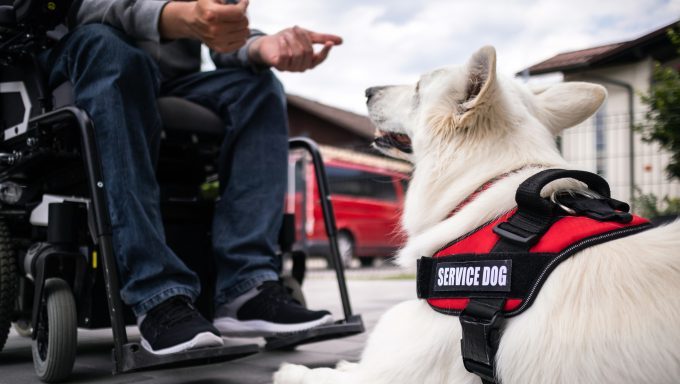
You may be familiar with the terms therapy dogs, service dogs, emotional support animals, and working dogs. We celebrate these remarkable canine companions for their acts of service toward safety and the well-being of mental, physical, and emotional health. Although their titles are sometimes used interchangeably, these types of dogs perform very different tasks. So what’s the difference?
What are therapy dogs?
According to the Alliance of Therapy Dogs, therapy dogs are trained to provide psychological or physiological therapy to people other than their handler. Often selected for their temperament, therapy dogs are calm and easygoing. They visit hospitals, nursing homes, hospitals, schools, hospices, rehabilitation centers, and more. Additionally, therapy dogs undergo training to experience petting and interaction with many people. Their roles vary, from aiding in boosting confidence in children with disabilities to visiting hospice patients and bringing relief from feelings of anxiety, hopelessness, or isolation. The ADA does not mandate access for therapy dogs.
What are service dogs?
According to American Humane, service dogs perform tasks that assist with their handler’s disability. Additionally, the Americans with Disabilities Act (ADA) states disabilities can be physical, mental, intellectual, sensory, and psychiatric. Service dogs play an important part in the well-being of their people by assisting with jobs that improve their quality of life. Tasks might include pressing an alarm, retrieving medication, and guiding a person safely across busy intersections, to name a few.
The ADA protects the rights of people with disabilities. Because of legal protections, service dogs can accompany their handlers in public spaces that are otherwise prohibited for pets. This includes restaurants, theaters, stores, hotels, and museums.
Service dog training is extensive and rigorous and can sometimes take over two years. Dogs must also prove their ability to complete tasks directly related to their partner’s disability. Additionally, service dogs must be obedient and always remain under the control of their handler.
What are working dogs?
Working dogs assist with tasks performed by their human companions. Herding, hunting, explosive detection, search and rescue, cancer detection, military, and police dogs are a few examples of types of working dogs. These dogs are highly intelligent and well-trained. Similar to therapy dogs and emotional support animals, working dogs are not granted mandated access to public spaces.
What are emotional support animals?
While not considered service animals under the ADA, emotional support animals (ESAs) also contribute to the well-being of their human companions. They can bring therapeutic benefits, especially for people with mental or emotional conditions. This can include calming anxiety, stabilizing emotions, or working in conjunction with other types of therapy. The Kentucky Center for Counseling further details the benefits of emotional support animals.
Emotional support animals require a prescription by a licensed mental health professional. A therapist, psychiatrist, or psychologist must determine that their patient requires the presence of an emotional support animal for therapeutic benefit. Unlike service dogs, the ADA does not mandate entry to public spaces for emotional support dogs.
Now that you know all about the different kinds of dogs out there, learn about the dog breeds that make the best emotional support animals!




